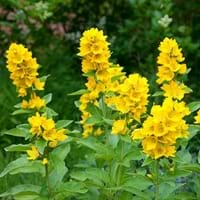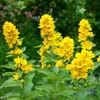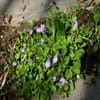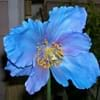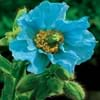Life Span
Perennial
Perennial
Type
Perennial
Flowering Plants, Shrubs
Origin
Eastern Europe, Turkey
Africa, America, Asia
Types
creeping Jenny, L. ephemerum
Lockinch, Petite Indigo, White Profusion
Number of Varieties
Not Available
Habitat
damp broad-leaved forests, damp meadows, ditches, roadside embankments, shores, stream banks
Along Railroads, River side, Roadsides
USDA Hardiness Zone
4-8
5-10
Sunset Zone
1a, 1b, 2a, 2b, 3a, 3b, 4, 5, 6, 7, 8, 9, 14, 15, 16, 17, 18, 19, 20, 21, 22, 23, 24
H1, 2a, 2b, 3a, 3b, 4, 5, 6, 7, 8, 9, 10, 11, 12, 13, 14, 15, 16, 17, 18, 19, 20, 21, 22, 23, 24
Habit
Upright/Erect
Arching/Fountain-shaped
Flower Color
Yellow
Blue, Pink, Purple, Red, White
Flower Color Modifier
Bicolor
Not Available
Fruit Color
Not Available
Not Available
Leaf Color in Spring
Green, Dark Green
Gray Green
Leaf Color in Summer
Green, Dark Green
Gray Green, Light Green
Leaf Color in Fall
Green, Dark Green
Gray Green, Light Green, Yellow green
Leaf Color in Winter
Light Green
Not Available
Leaf Shape
Long Linear
Egg-shaped
Plant Season
Summer
Fall, Spring, Summer, Winter
Sunlight
Full Sun, Partial Sun, Partial shade
Full Sun, Part sun, Partial shade
Type of Soil
Clay, Loam
Loamy, Sandy, Well drained
The pH of Soil
Acidic, Neutral, Alkaline
Neutral, Slightly Acidic, Slightly Alkaline
Soil Drainage
Well drained
Well drained
Bloom Time
Late Spring, Early Summer
Spring
Tolerances
Drought
Drought, Pollution, Salt, Soil Compaction
Where to Plant?
Container, Ground, Pot
Ground, Pot
How to Plant?
Divison, Seedlings
Seedlings, Stem Planting, Transplanting
Plant Maintenance
Medium
Medium
Watering Requirements
Keep the ground moist but not water-logged, Requires consistently moist soil
Form a Soil ring to water efficiently, Water Deeply, Water twice a day in the initial period
In Summer
Lots of watering
Lots of watering
In Spring
Moderate
Moderate
In Winter
Average Water
Average Water
Soil pH
Acidic, Neutral, Alkaline
Neutral, Slightly Acidic, Slightly Alkaline
Soil Type
Clay, Loam
Loamy, Sandy, Well drained
Soil Drainage Capacity
Well drained
Well drained
Sun Exposure
Full Sun, Partial Sun, Partial shade
Full Sun, Part sun, Partial shade
Pruning
Remove damaged leaves, Remove dead branches
Cut or pinch the stems, Prune for shortening long shoots, Prune if you want to improve plant shape, Prune ocassionally, Remove damaged leaves, Remove dead or diseased plant parts, Remove deadheads, Remove shoots
Fertilizers
All-Purpose Liquid Fertilizer, organic fertlizers, slow-release fertilizers
All-Purpose Liquid Fertilizer
Pests and Diseases
Slugs, Snails
Downy mildew, Leaf spot, Spider mites
Plant Tolerance
Drought
Drought
Flower Petal Number
Single
Single
Foliage Texture
Coarse
Medium
Foliage Sheen
Matte
Matte
Invasive
Sometimes
Sometimes
Attracts
Birds, Butterflies, Hummingbirds
Butterflies, Hummingbirds
Allergy
Skin irritation
Vomiting
Aesthetic Uses
Showy Purposes
Showy Purposes
Beauty Benefits
Not Available
Not Available
Environmental Uses
Not Available
Air purification
Medicinal Uses
Astringent, Diarrhea, Dysentry, Gastrointestinal disorders
Not Available
Part of Plant Used
Whole plant
Flowers, Leaves
Other Uses
Used for its medicinal properties
Showy Purposes, Used as Ornamental plant
Used As Indoor Plant
No
No
Used As Outdoor Plant
Yes
Yes
Garden Design
Groundcover, Mixed Border, Wildflower
Edging, Feature Plant, Foundation
Botanical Name
LYSIMACHIA punctata
Buddleia davidii
Common Name
Yellow Loosestrife, garden loosetrife, garden yellow loosetrife
Butterfly Bush, Summer Lilac, Butterflybush
In Hindi
Yellow Loosestrife
Butterfly Bush
In German
Gilbweiderich
Schmetterlingsstrauch
In French
salicaire Jaune
buisson de papillon
In Spanish
Lisimaquia amarilla
arbusto de las mariposas
In Greek
κίτρινο loosestrife
Butterfly Μπους
In Portuguese
Loosestrife amarelo
arbusto de borboleta
In Polish
żółty toje
Butterfly Bush
In Latin
Yellow Loosestrife
papilio rubo
Phylum
Anthophyta
Spermatophyta
Class
Equisetopsida
Dicotyledonae
Order
Primulales
Lamiales
Family
Primulaceae
Scrophulariaceae
Genus
Lysimachia
Buddleja
Clade
Angiosperms, Asterids, Eudicots
Angiosperms, Asterids, Eudicots
Tribe
Not Available
Not Available
Subfamily
Not Available
Not Available
Number of Species
Not Available
Importance of Yellow Loosestrife and Butterfly Bush
Want to have the most appropriate plant for your garden? You might want to know the importance of Yellow Loosestrife and Butterfly Bush. Basically, these two plants vary in many aspects. Compare Yellow Loosestrife and Butterfly Bush as they differ in many characteristics such as their life, care, benefits, facts, etc. Every gardener must at least have the slightest clue about the plants he wants to plant in his garden. Compare their benefits, which differ in many ways like facts and uses. The medicinal use of Yellow Loosestrife is Astringent, Diarrhea, Dysentry and Gastrointestinal disorders whereas of Butterfly Bush is Not Available. Yellow Loosestrife has beauty benefits as follows: Not Available while Butterfly Bush has beauty benefits as follows: Not Available.
Compare Facts of Yellow Loosestrife vs Butterfly Bush
How to choose the best garden plant for your garden depending upon its facts? Here garden plant comparison will help you to solve this query. Compare the facts of Yellow Loosestrife vs Butterfly Bush and know which one to choose. As garden plants have benefits and other uses, allergy is also a major drawback of plants for some people. Allergic reactions of Yellow Loosestrife are Skin irritation whereas of Butterfly Bush have Vomiting respectively. Having a fruit bearing plant in your garden can be a plus point of your garden. Yellow Loosestrife has no showy fruits and Butterfly Bush has no showy fruits. Also Yellow Loosestrife is flowering and Butterfly Bush is flowering. You can compare Yellow Loosestrife and Butterfly Bush facts and facts of other plants too.
